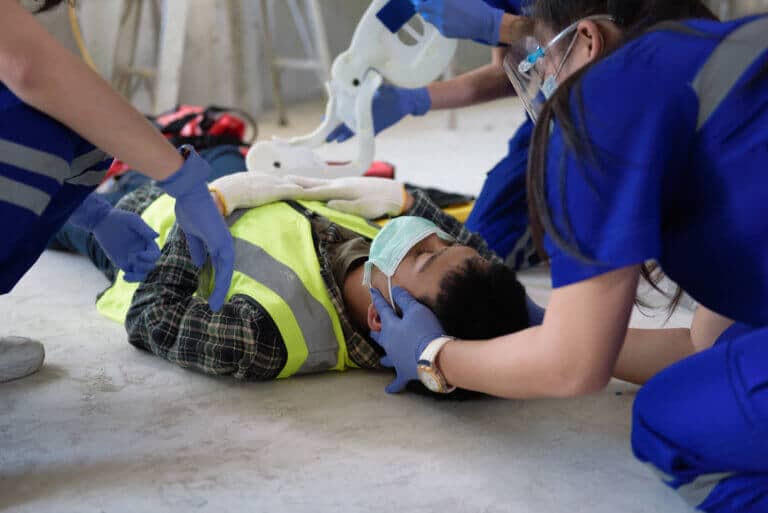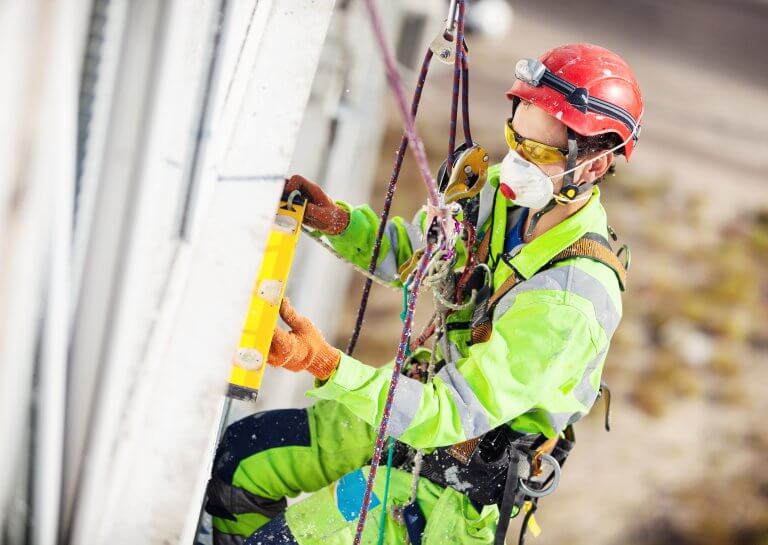The rise and massification of teleworking entail the difficulty of applying efficient strategies to prevent occupational diseases and accidents. However, modern people management has developed successful alternatives, based on constant communication and continuous improvement.
Today it is widely accepted that telecommuting and remote work are “here to stay”. In fact, a large proportion of critical occupations are actually hybrid, situation which translates itself into a higher proportion of working hours developed in the workforce’s houses.
Therefore, it is important to develop and apply improved occupational health and safety plans that simultaneously protect both those who work in the company’s facilities and those who work remotely.
The complexity of the remote online work environment
Advances in information and communication technologies have significantly facilitated remote work. However, this also poses complex occupational health and safety challenges.
On the one hand, organizations must optimize their information strategies, so that their teleworkers are aware of the procedures they must apply to take care of their physical and mental integrity. On the other hand, the companies need new control designs to ensure that each of the remote collaborators effectively complies with the occupational safety standards transmitted by their employers.
Despite this urgent situation, a large proportion of “teleworkers” do not have a space dedicated exclusively to their work. In fact, even if they have it, not always this space has been designed with ergonomic principles, nor are they equipped with security systems such as, for example, evacuation routes or fire protection networks, among other elements which do exist in companies.
This implies the presence of various occupational risks specific to teleworking, and that contingency must be resolved both by the employer and by each of the workers involved.
Besides we must not forget that teleworking must comply with current regulations, especially the provisions that regulate the prevention of accidents and/or occupational diseases. Therefore, employer and worker must comply with a series of obligations aimed at ensuring that the teleworking regime provides the same protection as face-to-face services.
THE MAIN OCCUPATIONAL HEALTH RISKS OF TELEWORKING
Although the risk of workplace accidents for a teleworker is less than the risks faced by those who work in companies’ facilities, because there are no dangerous extreme physical tasks, and no long trips from home to the office, this does not imply absolute safety. On the contrary, today it is possible to identify the following important risks:
Musculoskeletal ailments
It is the most common occupational health problem and is usually associated with a lack of ergonomics in the home workplace. This includes poorly designed desk or work surface, chairs, keyboards, screens, and footrests, among other items. Other aspects such as forced postures, body immobility and muscle mechanization are also not properly addressed.
Eyestrain
It is generally caused by inappropriate lighting, as well as poor quality, incorrect location and poor adjustment of the computer screen.
Psychological disorders such as anxiety, stress and social isolation
They appear due to overwork, poor planning and poor management of the working day. This usually derives in a poor division between work and home, which also translates itself into personal conflicts and eventual family crises.
Organization problems
They usually arise due to inadequate coordination with the other members of the team, which usually leads to poor individual and group work performance.
The main Security risks of Teleworking
Teleworking also poses complex security risks, given that it is an uncontrolled space, and where the strategies and plans developed for companies, industries or offices are not always put into practice.
This scenario is further aggravated if it is considered that each particular home may have its own risks, such as faulty electrical installations, narrow exits, dimly lit spaces or excess humidity, for example. All of this creates difficulties in properly managing plans of risk prevention.
Among the main factors that increase this situation are the following:
- Difficulty accessing emergency care.
- Stress caused by domestic problems, typical of the home and coexistence, added to the difficulty of work.
- Interference by third parties (children, relatives, partners or other people) in the normal development of daily tasks.
- Deficiency or absence of appropriate infrastructure, equipment and work furniture.
- Lack of defined evacuation routes in case of emergency.
- Inability to efficiently supervise the performance and care of the worker.
- Poor reconciliation due to lack of clarity in the limits established between family life and work.
- Anxiety or apathy generated by overload (or shortage) of workload.
Each of these risks could be properly addressed, in a common workspace. However, not all homes are the same, so this peculiarity of having multiple spaces for teleworking translates into a major obstacle to successfully applying a single risk strategy.
How to face the Health and Safety risks of Teleworking?
Despite this complexity, there are methods to reduce health and safety risks in the teleworking environment.
Above all, the company must implement a constant and reliable daily communication system between employer and employee. Through these conversations (which can take place just before starting the working day), one of the supervisors can remind the worker the list of potential home office risks, and at the same time suggest a strategy that allows him to face them.
Some of these solutions are as follows:
Have a remote work policy
The first step in establishing job security guidelines for remote workers is to develop a remote work policy. It must be communicated in a timely manner to all collaborators, and constantly emphasize the need for them to respect and adhere to it strictly.
Check lighting, ventilation and heating
This task must be done together with the collaborators, since they are the ones who know their home best. In this way, best work practices can be agreed upon and they will be guided to correctly configure their workspace. We can also check the state of the electrical installation; the existence of cables that can cause trips and falls; and the presence of objects that can fall and hit people, among many other possible risk situations.
Check the status of work equipment
Most teleworkers perform their tasks on a computer. Therefore, they must have special care about some critical aspects such as monitor height, keyboard position and chair ergonomics. In addition, any type of object or element that could cause harm to the worker must be eliminated. In this way we can have a friendly workspace and more security.
Strengthen contact channels
Communication channels can fail during an emergency. Therefore, it is essential that the worker has more options (Internet, mobile phone, landline, instant messaging applications, email, etc.), to adequately deal with this eventuality.
Have standard emergency procedures
It is absolutely essential to standardize emergency procedures, even if it involves multiple workspaces that are different from each other This includes strategies to prevent accidents, incidents and disruptive factors; to order elements that constitute risk for the worker; and to write adequate reports. All these procedures must be duly documented and communicated to the workers, making sure that each of them has received, understood and accepted them.
Periodically review the workspaces
The right conditions don’t last forever. It is important, then, to review regularly (hopefully once a month), the effectiveness of the measures adopted. This also implies identifying eventual changes in the workspace, as well as proposing new actions that optimize the task.
Specialists in people and talent management recommend adopting the so-called PDCA model (Plan, Do, Check and Act). This is a cyclical and effective tool, which ensures continuous improvement in occupational health and safety strategies.
It is also valuable for companies to have professionals specialized in occupational health, such as doctors, physiotherapists or psychologists. They can guide and help workers to detect physical or psychosocial risks that, due to lack of direct contact or information, may go unnoticed.
It may not always be possible for one of these professionals to physically go to the place where the worker is, but they can provide virtual remote assistance, which also represents valuable help, whether in the form of treatments, therapies or advice for take care of their health and physical integrity.
Create an account DataScope and start now!
DataScope is the ideal tool to eliminate paper use, save time, and efficiently collect data from the field. It allows companies to streamline, organize and evaluate field work thanks to its online forms, which provide indicators in real time, 100% adaptable to any area.
With DataScope, your team can answer custom mobile forms from their phones or tablets, online or offline, through the app.







